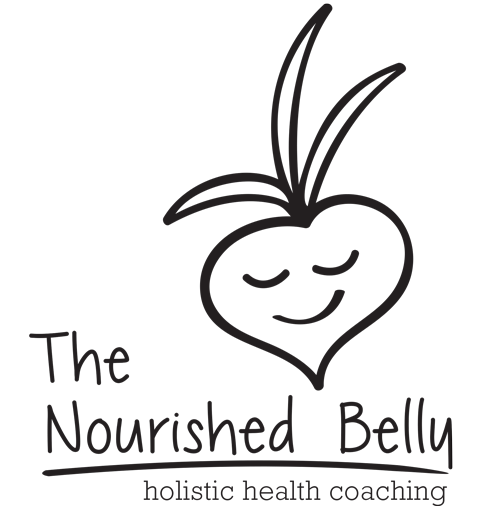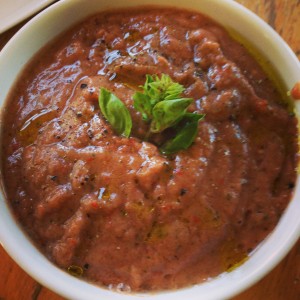What Nutrition Coach Tammy Chang has in her fridge, part 2.
Read MoreMust Haves for Your Fridge
Tammy Chang of the Nourished Belly shares her must haves for the healthy fridge.
Read MoreShow Some Love to Your Gut Bacteria with Fermented Foods
When you hear the word ‘fermented,’ your mouth probably doesn’t start to water. It sounds a little funky, and you have more than likely left some fruit or vegetables in a container for too long… and witnessed a fermentation process begin. Despite the not so appetizing word, fermented foods have AMAZING benefits and can be a delicious addition to your everyday diet.
Fermentation (more specifically, lacto fermentation) is a process in which natural bacteria feeds on the sugar and starch in a particular food and converts it into lactic acid. This process not only preserves the food, but it also produces a bouquet of super beneficial enzymes, vitamins, Omega-3 fatty acids, and various strains of probiotic bacteria. Lactic acid inhibits putrefying bacteria and encourages the proliferation of live, beneficial bacteria. From an animated perspective, think of it this way: the consumption of fermented foods infuses our body with healthy, living microorganisms that instantly get to work realigning our bodies. Sounds a little strange, doesn’t it?
When ingested, these bacterial colonies start to populate the intestinal track and essentially train the immune system. From recolonizing the digestive track with health bacteria (creating a happy, healthy gut) to keeping our flora balanced, fermented foods result in a whole body wellness.
Historically, fermented foods have been an important part of nutrition in many cultures around the world. Sauerkraut is a favorite in Germany, Kimchi in Korea, and in other parts of Europe, sourdough bread is made from naturally fermented dough. Even the ancient Greeks understood the benefits of this transformational process and often referred to it as ‘alchemy.’ As an important part of traditional diets, modern studies have begun to again focus on the plethora of benefits and many people are integrating these foods back into their regular diet.
There are a lot these foods you can get at your local market, and just as many that you can make at home. The process really just requires attention being paid to using the right ingredients and keeping everything clean (to avoid introduction of unwanted, harmful bacteria). When buying, be sure to pay attention to the fermentation process and avoid any commercialized versions. Additionally, try to cut out sugar as much as possible (want to Kick the Sugar with us?), for it feeds the bacteria we want to get rid of.
As you embark on your journey towards a traditional diet, you’ll notice that this transition is multi-faceted. Don’t let that overwhelm you. In the Nourished Belly Diet, Tammy talks about the different levels of participation when moving to a whole-foods, traditional diet. Take it steps that are comfortable for you, and experiment with different foods and pairings. As you increase your fermented food intake, you’ll notice a happy, healthy belly.
Written by Ashley Green
Resources:
How to Cut Kale
Many clients ask me how to cook kale, and what I love about not just kale, but all greens, is that they are so simple! Really. Just a quick sauté and done! One of my favorite ways to cut kale is a quick chiffonade. You get these thin beautiful ribbons, and they add a little sophistication to a quick meal! But enough! Watch the video and try this at home! https://www.youtube.com/watch?v=7YgXElamAc4
Eat This: Tomatoes
In every session with my clients, we always have a Food of the Day that is based on what specifically the client is working on, and the season. Before summer ends, I want to make SURE I talk about tomatoes. YES! Tomato plants love hot days and the hot days give us nice, big, plump tomatoes. They are found in cuisines all over the world, but they are originally native to Western South America. Tomatoes are known for their high vitamin C and high antioxidant content. Specifically they get a lot of buzz for an antioxidant called lycopene. Lycopene is in the carotenoid family and is shown to be cancer protective for at least prostrate and breast cancer, excellent for heart health, and helpful for keeping blood vessels strong and healthy. Lycopene has also been shown to be more absorbable after it's heated. (Which is a great reason to make tomato sauce!)
I always, however, recommend clients to have a mix of raw and cooked tomatoes. Raw tomatoes have an excellent vitamin C content, especially in that jelly around the seeds, so don’t throw that away!
Another wonder about tomatoes is that they contain glutamates, which are natural flavor enhancers. You might have heard of glutamates because of MSG, or Mono Sodium Glutamate. MSG is a flavor enhancer that fits my definition of a processed food: you can't make it in your own kitchen. So, I prefer to add naturally occurring glutamates to my dishes. Tomatoes! Excellent! In they go. Other foods that include natural glutamates are mushrooms, anchovies, parmesan cheese, and of course, bacon!
Tomatoes are also part of the nightshade family, which includes peppers, potatoes, eggplant, and cayenne to name a few. Some find they are sensitive to nightshades, and for those with arthritis, it is advised to cut them out to see if symptoms improve.
Choose firm tomatoes with bright green stems, and buying them straight from the farmers market ensures freshness and taste. Store tomatoes at room temperature, for putting them in the refrigerator will make them mealy. If buying them canned, which is a fine choice when they aren't in season, make sure your cans say BPA free (BPA is a chemical added to can linings that can disrupt hormones), or buy them in glass jars.
My Most Recent Tomato Obsession: Gazpacho
Gazpacho originated from the Andalusia region of Spain, and is a soup, usually with a tomato base, that is served cold. It has now evolved to take on many different forms, and it’s my recent summertime obsession. It is extremely refreshing to have on hot summer days.
Serves 2
2 cups tomatoes
1 large cucumber
1 large red pepper
1 cup loosely packed basil
2 cloves raw garlic
1 T balsamic or wine vinegar
2 T extra virgin olive oil
Salt and pepper to taste
1) Throw all ingredients into a blender, or place in a deep bowl and use an immersion blender. Blend.
2) Salt and pepper to taste!
3) Serve with toast or crackers, or hard boiled eggs!
Must Haves for Your Fridge Part II
What Nutrition Coach Tammy Chang has in her fridge, part 2.
Read MoreEat This Series: Nettles
Hello! First post back after the sugar challenge. I am so extremely thrilled how the challenge went for myself and for everyone involved! I have received such amazing feedback… It really shows that just a little bit of effort can make a huge difference.

Now on to Nettles! I’m excited about this post for a few different reasons. It’s the first one in my Eat This Series, although I would probably include my post about coconut oil and ghee in the Eat This category. The purpose of the Eat This postings is to show you simple and powerful foods to add into your diet for maximum nutritional benefit. The biggest bang for your buck so to speak. I’m also excited because nettles are an example of a seasonal super food. We have all become accustomed to eating foods whenever we feel like it, but when we really start tapping into what foods are available seasonally, we are increasing our awareness of nutrient density as well as tapping into the harmony of the harvest. It’s a beautiful, delicious, and healthy way to eat and live. Nettles have only recently become available in the last couple of weeks and the season usually goes through the end of April. Nettles are actually a weed, and are found all over the United States. They are also called stinging nettles, because they have stiff, bristly hairs that are found on the leaves and stems which inject a stinging fluid into the skin. An interesting note is that the sting can be used therapeutically as a treatment for increasing circulation and arthritic conditions. However, the sting isn’t pleasant, so if you find a patch to harvest, handle with care! Heat and drying destroys the sting.
Benefits
- In Traditional Chinese Medicine, they are considered a blood tonic and support the bladder, kidney, spleen and liver.
- Detoxifying
- Helpful for allergies and hay fever
- Good for hypoglycemia because they help reduce blood sugar levels
- Helpful for high blood pressure
- Lowers inflammation
- Nutrient Dense
Nettles are extremely high in vitamins and minerals, including vitamin C, Vitamin K, Carotenes and Iron. The other day, I let the fresh nettles steep all day, and the tea turned into this amazing dark green potion! It was so thick and felt heavy and rich in my mouth. I was just simply amazed by the color! It’s SO green…. The chlorophyll just pours out of it! Chlorophyll is an excellent source of magnesium, and for maximum absorption, drink the tea while eating a bit of fat. My fellow nutrition friend Corinne Steel uses a bit of flax seed oil that she pours into her carrot juice to better absorb the carotenes. Same idea with chlorophyll; it has both fat and water soluble components. Fresh nettles can be sautéed like spinach, and are delicious! Don’t forget to add some butter for better absorption!
You can buy nettles dried as tea, and I often brew these overnight to get all the goodness out of them. Nettle and mint are a good combination. Although dried nettles are great to use, definitely take advantage of using fresh nettles if you can find them at the Farmers Market. If you are in the Bay Area, Happy Boy Farms is already selling them. Check out the market schedule here.
Have fun exploring with the amazing super food! Eat them. Send us some comments if you gave them a try…. Enjoy!
References:
McGee, Harold (2004) On Food and Cooking: the Science and Lore of the Kitchen. New York; Scribner.
Wood, Rebecca. (2010) The New Whole Foods Encyclopedia. New York. Penguin Books.



